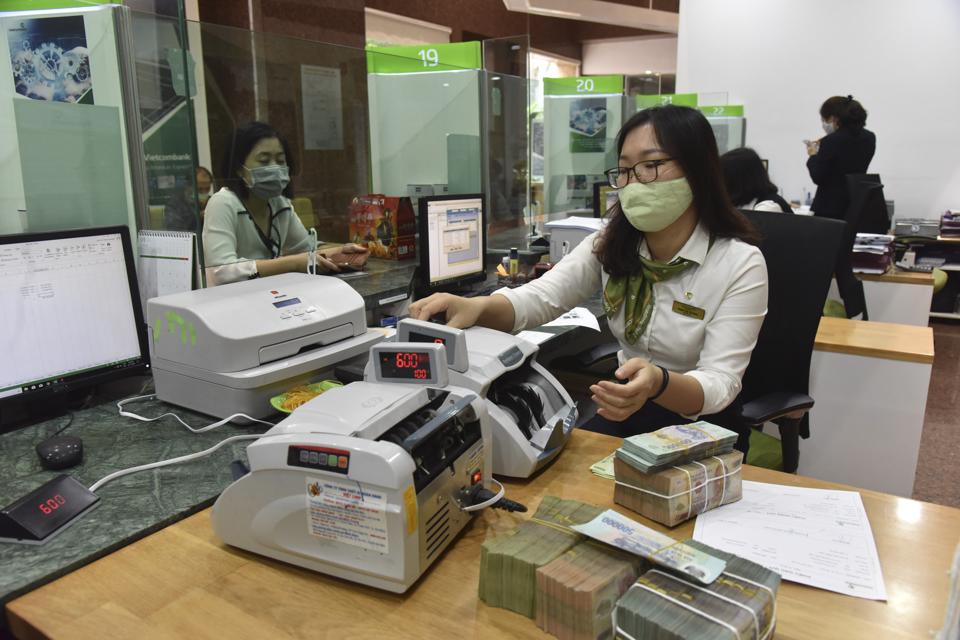Central bank rules out expanding credit growth target
The SBV set the credit growth target at 14% this year, higher than the 2020-21 period, which was 12.17% and 13.61%, respectively.
The State Bank of Vietnam (SBV), the country’s central bank, would keep the credit growth target unchanged for this year, as an expansion may impact the banking sector’s liquidity and raise the average interest rates.
| A customer at the Vietcombank's branch in Hanoi. Photo: Thanh Hai |
SBV Vice Governor Pham Thanh Ha gave the information during the Vietnam Socio-Economic Forum 2022 on September 18.
In 2022, the SBV set the credit growth target at 14%, higher than the 2020-2021 period, which was 12.17% and 13.61%, respectively.
“At a time when central banks around the world are tightening monetary policy to curb high inflationary pressure, the SBV expects a higher credit growth compared to previous years to have positive impacts on economic recovery and macroeconomic stability,” Ha said.
The credit growth has expanded by over 10%, putting pressure on controlling the rate by the end of this year.
According to Ha, the most critical goal in monetary policy management is to contain inflation, ensure the security of the banking sector, and have liquidity in the financial and foreign exchange markets.
Ha also expressed concern over the rising inflationary pressure amid growing global uncertainties, pointing out the expansion rate of the consumer price index (CPI) by 2.58% in the eight months.
“An expansion in the credit growth target would impact the stability of the banking sector,” he continued.
The SBV’s representative noted that credit growth has been at a much higher pace of expansion than economic growth. In 10-year time, while the economic size increased by 2.7-fold, the credit growth went up by 4.4-fold.
“For further growth, the economy needs different sources of capital, not only from the bank but also from the capital market, public and foreign investment,” he said.
He also suggested the SBV may consider other options to manage credit growth in the future but not drop the credit growth quota in the short term.
Former Vice Director of the Central Institute Economic Management Vo Tri Thanh shared the view with the SBV on keeping the credit growth target at 14%, saying further expanding the rate may cause a risk of capital outflow from the economy.
Given the limited room for credit expansion during the remaining months, Thanh called for the SBV to continue tightening credit management and preventing capital from flowing into risky fields.
In its latest report on Vietnam, Moody's says the country's domestic credit and banking system assets to GDP ratios have continued to rise to 124% and 187% in 2021, respectively, among the highest levels among Ba and Baa-rated sovereigns.
Taking into consideration the already high financial leverage at the moment, further expanding credit growth would undermine financial security in the long-term, stated the rating agency.











